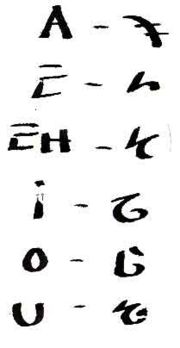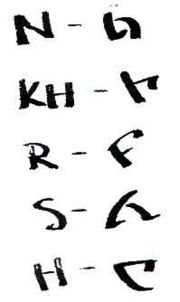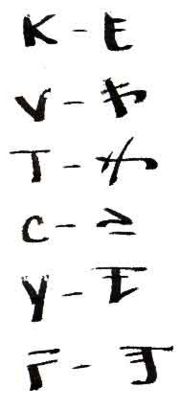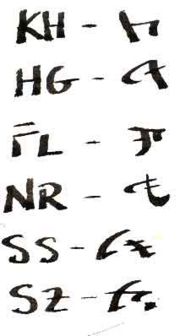Lupine
From TheHolo.Net Forums Wiki
Contents |
Canon
The Lupines are not a canonical race, having been invented for use at SW-Fans. Pre-reset they were brought into existence by the roleplayer Vega Van-Derveld, since the reset Loklorien s'Ilancy has brought a great amount of depth to the Lupines of SW-Fans.
Post-Reset
The Lupines are a dying race. Only a handful remain - including Loklorien s'Ilancy and Arya Ravenwing.
The Figaro System
The planet of Figaro Favoura IV lies deep in Wild Space, in the Figaro System. It has largely gone beyond detection due to its’ isolated position in the galazy, having been discovered by the Chiss in later years, but left largely alone.
The binary suns, Figaro and Favoura, are orbited by five planets: Brennen, Zerstörung, Rückstand, Figaro Favoura IV, and Weit-Fällt.
The Five Planets
Brennen
Brennen, the first planet, lies the closest to Figaro and Favoura. It is an uninhabitable rock because of its’ proximity to the two stars.
Zerstörung and Rückstand
Zerstörung and Rückstand, the second and third planets, are surrounded by a dense asteroid field that prevents any manner of exploration. The only knowledge of these two planets can be found in the oldest of history books, and over the course of time even those have become increasingly harder to find. Because of this, Zerstörung and Rückstand are often thought of as cursed planets. The truth of the matter is that the two had once been inhabited as they were far enough away from the suns to sustain life, and that there was in fact a sixth planet of the Figaro System – Figaro Favoura. These three planets warred constantly with each other in what became known as The Firewars, with the end result being the destruction of Figaro Favoura and the creation of the surrounding asteroid field.
Figaro Favoura VII is the world that the survivors of The Firewars fled to. It was a comparatively lush planet, with seven moons. Three of the moons were colonized; A'khe'rehn (the second moon), Leh'ben (the third moon), and Schwartzweld (the seventh moon). Over time, Figaro Favoura VII also became consumed by civil war, and again refugees took to the stars. They settled on the three moons, leaving their homeworld behind and vowing to never return.
Weit-Fällt
Weit-Fällt is the fifth and last planet in the Figaro System. So far out from the twin suns, it is a world shrouded in darkness and was commonly known as the Hallesmutt, or the Mouth of Hell. To the Lupines, it is called The Gate of Souls. Days last for only a few hours at a time, and it is ruled by nocturnal predators that roam the craggy, mountainous surface. Early expeditions were never heard from once they had touched down, and so the planet itself was written off as uninhabitable. Only during the rule of House Sundergotte was a renewed interest in Weit-Fällt taken. In the early days of their creation, before their takeover of Schwartzweld, many Lupines were sent there to die as punishment for their wild nature and vicious crimes. After subjugating Schwartzweld, and with the blessing of House Losstarot, House Sundergotte undertook a great task. During the course of twenty years, the Lupines labored in the precious few hours of cool sunlight to build a massive arched gate. Even to this day the gate stands tall, a testament to Lupine architectural engineering and a monument to those who had been sentenced to die there.
Exploring the Lupines
Every House, whether Greater or Lesser, can be traced back to the two Apex Houses – Loveloxx and Losstarot. The Lupine social structure is largely a caste system, being divided into two groups - the Greater Houses and the Lesser Houses - as stated previously. Within each is a subset of social levels unique to each group. This formed over time through the nature of each Lupine strain, or Bloodline as the Lupines call it. For the entirety of their existence, House Loveloxx has been a symbol of chaos and uncontrollable rage while House Losstarot has been a symbol of order and controlled anger. Each Bloodline compliments the other in a perverse sense, and one cannot exist without the other.
Both Apex Houses, Loveloxx and Losstarot, had their beginnings with two simple men. One, Townsend Loveloxx, sought to turn his fear of the Force into a weapon while the other, Melkhiah Losstarot, found himself a victim of Loveloxx’s twisted designs. One might wonder why then, that Loveloxx became synonymous with chaos and Losstarot with order instead of the opposite. Why Losstarot, who was left reeling with pain and hate should rise to wear the mantle of order. The simple truth of it is that Loveloxx lost control of himself. He subjected countless people to his experiments, killing many long before he saw success. His goal? To create a people who could counteract those with the Force, and destroy them. And what better vessel to carry out his irrationality than the very beast that naturally hunted anything connected with the Force – the vornskr? Days turned to nights, then to weeks, then to months, and eventually to years. Failure heaped upon failure. It wasn’t until three years after first starting his evolutionary crusade that Townsend Loveloxx succeeded. Only, the captive subject who had taken to his “Lupine Strain” was the intended of his comrade and colleague, Melkhiah Losstarot. Losstarot would not learn of this until another year had passed. So fearful of the Force was Loveloxx that he let his emotions run free and his fangs roam unchecked. His Bloodline was volatile, it boiled at any inkling of Force presence, and it drove man down into beast just to fulfill its vicious design.
In the beginning, Losstarot shared Loveloxx’s Bloodline. He was a beast that walked upright. And he was disgusted. Repulsed by his own existence. Every time he sought to control the animal within him, he was overwhelmed. Until the day he discovered the secret to his comrade’s success. To say that Losstarot was righteously empowered would be an understatement. However, instead of lashing out through direct violence, Losstarot began work on his own strain; a strain that would not hold him captive to his beastial cravings and triggers. A strain that would coexist with the Force and make no allowance for any loss of facilities. Studying from Loveloxx’s notes proved instrumental, and Losstarot was able to complete his new creation in far less time than expected. Now a new creature, Losstarot could be both man and animal without either gaining quarter over the other. It was a balance that Loveloxx refused to accept.
Thus, chaos and order have warred since their inceptions. Their original intentions have not been forgotten; in fact, they have intensified. Both Bloodlines view themselves as being in the right, and betrayed by the other. Over the years however, a second school of thought emerged – one of superiority. Loveloxx Lupines proclaim that they are the first; the true children of perfect accelerated evolution while Losstarot Lupines hold to the belief that they are the ultimate, perfected creations without the chains of involuntary Force reaction. The contention between the two Bloodlines is very nearly tangible.
The Houses
Apex Loveloxx | Alphas Eidelbrendt | Denkmal | Luthgarde | Von Metzger | Zieg’recht | Ranonachte | Alaric | Geiss
The Lesser Houses of the Loveloxx Bloodline
Judig | Mudejar | Lothair | Ravenwing | Olrecht | Shonnache | Imre | Leissin | Roth | Meier
The Greater Houses of the Losstarot Bloodline
Apex Losstarot | Alphas Sundergotte | Richter | Steuerung | Van-Derveld | Su’beate | Denkinger | Palenke | Kroenen
The Lesser Houses of the Losstarot Bloodline
Kursk | Kasch | Seigresche | Aulflendte | Tene’schonne | Wulfgein | Aram | Emerick | Merris |
InrugeilThe Greater Houses
The Greater Houses are those whose family members are born Pure. A Pure Lupine is one who was not Changed, or whose parents were not Changed. These Lupines consider themselves the true children of their singular ancestor; whether it is Townsend Loveloxx or Melkhiah Losstarot. This has produced a significant amount of pride and arrogance among those of the Greater Houses, for no matter which Bloodline they are there is a sense of inherent superiority over even those of their own stock. This of course caused much trouble during later generations, as it was with House Van-Derveld that the internal strife within the Losstarot Bloodline began.
The Lesser Houses
The Lesser Houses are made up of those who were Changed, whose parents were Changed, or are in some form or another descended from a Changed relative. Every Lesser House is an extension of a Greater, but there is much more humbleness and inner nobility to be found in a Lesser House. These Throwbacks, as they are called by the Greater Houses, retain a sense of individuality not found in Purebloods. Some would argue that they treasure their Lupine nature and treat it as more than just a title or accessory.
Apex Bloodlines
Through the ages, the original two Bloodlines have managed to survive, if not in some form or another, alongside both Greater and Lesser Houses. These Lupines are seen as the highest forms, preserving the original blueprints of the Lupine race in their veins. Loklorien s’Ilancy, originally Loklorien Iakyn s’Ilancy Losstarot, is one of these. She has dropped her Losstarot title in order to preserve her anonymity. As well, although it is not yet know, Arya Ravenwing has the Apex blood of Loveloxx in her own veins.
Lupine Religion
Nothing was more important to a Lupine than the preservation of their race. From this, a loose theocracy was formed around their original progenitors. However, while there was no actual worshipping of those that came long before, a system of honoring and continuance came about. For both Bloodlines, knowledge was viewed as a sacred thing, and every House, whether they be Greater or Lesser, had handwritten volumes dedicated to their lineage, and that of their entire Bloodline – some had even collections of the ancestries of their foes. As said before, preserving their blood was their ultimate goal, and more often than not one’s heritage dictated his or her social status and how they were viewed among the Houses.
Each Bloodline had their own Re’idulf, or Council of Elders. This aged group oversaw everything which concerned the documentation of the Houses.
Held in complete reverence however, were the original vials of the Lupine serums that had been created by Townsend Loveloxx and Melkhiah Losstarot. Each Alpha House of the current ruling era held their respective vials – locked away in vaults that only the Re’idulf could gain access to.
Once it became apparent that they were dwindling into nothingness, the Lupines buried their history on select worlds, leaving 'protectors' to guard their hidden secrets. Both Bloodlines knew they were becoming extinct, and instead of trying to spread word of their existence in the hopes of being remembered, they attempted to erase their mark on the galaxy. Preservation of the Bloodlines was paramount to everything, and in the face of extinction they believed themselves to be a failure of a species (this particular train of thought gradually formed over many, many years, as they slowly died off).
House Brands
House brands can be found on every Lupine; usually between the shoulder blades or upon the left hip. Originally they were received with heated metal, but with the coming of Houses Luthgarde and Steuerung, freeze-burning became the normal method of application. Traditionally, the fewer House Brands one has indicates how ‘pure’ their blood is. For instance, an Apex Lupine will have only one Brand (that of their Bloodline), while an Alpha Lupine will have not only the Apex Brand, but their own House crest burned below as well. These secondary crests are shown smaller than the Apex Brand, to denote their social stature. Likewise, a changed Lupine will have not only the symbol of his changed status, but that of the House he was changed by. Also, if a Lupine had a relative who came from a different House, that House Brand was also included.
House Brands often dictated the style of dress, as depending on the location of the brand, that area of skin was usually left open for others to see. It was an easy way to see one’s lineage, and what house or houses his/her blood pulled from.
Sterility
Over the course of time, procreation with those not of the Lupine species became impossible. Only with other Lupines could children be had, and many belonging to the Greater Houses succumbed to inbred madness. Even Changed Lupines could not breed. Another disturbing fact began with the emergence of House Van-Derveld, in which uncontrolled inbreeding resulted not only in madness, but in the offspring losing the ability to Change at all. At the same time, the Loveloxx Bloodline had found themselves faced with the same situation, House Von-Metzger descending just as quickly as the Van-Derveld family. With the coming of House Denkinger and House Ranonachte, a solution was found and a shaky truce formed – to save their race the two Bloodlines would have to offer new blood into the mix. Arranged marriages became prevalent, as those who were given up were forced to partake of their new family's in a painful ritual that ended with a full transformation into the other strain. Loveloxx were changed to Losstarot, and Losstarot to Loveloxx.
For a time this solution worked well enough, and the two lines prospered once again. Such a thing was only temporary however, as what had initially caused the infertility once more reared its' head. Lupine women began miscarrying; stillborn births rose fifty percent, and the rate of children born alive plummeted. With the realization that they could not cheat this hand of fate came the Great Lupine Migration.
The Guardians
With the two Bloodlines becoming more organized and their psuedo-aristocratic social system forming quite nicely, the introduction of those who would be known as Guardians soon came to pass.
The only species to be taken over by the Lupines, their planet was occupied and used as a collecting grounds of sorts. The pale inhabitants soon found themselves enslaved by the master race (as the Lupines often referred to themselves as). Used as servants and for hard labor, the Guardians soon became the Lupine's official slaves.
Those that were born with the force were often seen as undesirables, and killed in the most brutal of ways. One such method, used by the Losstarot, was to inject the infant with a small amount of Loveloxx strain toxins (taken from the poison-tipped tails of slain Loveloxx Lupines). This was decidedly one of the most cruel ways of dispatching Force sensitive young, as the parents were often made to be present.
Eventually however, the Guardians grew stronger, and with the onset of the first cases of Lupine madness, they began to overthrow their Lupine masters and band together. Now self-titled Guardians, their own social structure developed rigidly, with proper etiquette evolving due to their years beneath the Lupines. If there was anything their masters taught them, it was that decorum was essential. The Guardians disregarded the feral aspect of the Lupines though, and over the centuries they diligently policed the Lupines. They protected those who had the unfortunate luck of being caught in the middle of the many skirmishes between the two Bloodlines.
"They came from nothing, and will return to nothing" is the prevailing mindset, as well as only retaliating in defense when in conflict with a Lupine.
Loveloxx Lupines are seen with pity, and regarded by Guardians as mere beasts who do not know any better. They are quick when dispatching these Lupines, for they know the dangers of a berserk Loveloxx. Losstarot however, are much more hated, as they have no mental handicaps when in regards to the Force. Guardians see them as cold, cunning, and sickly twisted adversaries. Brutal torture is more often than not reserved for most Losstarot.
Unlike the Lupines, the Guardians are not facing the threat of extinction.
For all of their hate, a Guardian will not make the first strike against a Lupine. Their name implies just that - to guard. In fact, while it is becoming increasingly rare, there are still instances where a Guardian and a Lupine will meet, and no blows come to pass. The air about the two is thick with apprehension on both sides however, and the way the two treat eachother is often with forced politeness and courtesy. Biting remarks and harsh words can be exchanged, but unless the Lupine acts with the intent to physically harm, the two will part without a fight.
Common derogatory terms that the Lupines use when addressing Guardians are:
- A'kha'ru - male slave
- A'kha'ri - female slave
Guardians do not stoop to such levels as to call a Lupine names, though they are known to become condescending when talking to a Lupine, often using words such as "mindless beast", "animal", and simple creature".
The Lupines and Cathar
The Lost Palace of Beasts
"The Lost Palace of Beasts has never been found - not by anyone in my generation. The Shu'Yon would tell stories of monsters that were man by day, and beast by night. They worshipped the things, offering gifts of gold and silver, and sometimes even their own children. The beasts were soon seen as gods - sent from the stars to protect the mountains and keep them from sinking into the sands. No one knows where the Lost Palace is, only that it is in the Vercor Mountains to the northwest. Some say it is carved into the Ursano Crags, and others swear on their lives that it is not a palace at all, but a giant cave.
"Even the wild armies of the north stay away from the Vercor Mountains. Some are simply afraid, but many feel that if the beast-gods are disturbed, then they will leave Cathar and allow the mountains to sink. And so no one dares to set foot past the Obelisks.
"The Obelisks were erected as barriers - and a warning to all that beyond them were the lands of the beast-gods and that any who went forward were subject to the whims of these gods. None that I know will venture past them, and those that do are usually never seen again. Those that are, return as raving lunatics - madmen who had been driven insane by something unseen.
"Only fools go past the Obelisks." -- Elder Cathar priest
It is easy for one to tell that the Cathar were very superstitious of what they regarded as the Beast-Gods. It is not an uncommon thing for travelers to offer gifts to the Beast-Gods, building alters at the barrier of the obelisks.
The Lost Palace itself was one of the Lupine's many strongholds; a magnificient citadel built into the Vercor Mountains as a refuge and hiding place for the Loveloxx and Losstarot Vials. Grand vistas carved into the mountainside, spires that rose into the clouds, and majestic statues gave the citadel a very dominating appearence. The interior was equally beautiful, as busts of Lupines - both in human and vornskr form - could be found in abundance. Tapestries, statuettes, and many other priceless objects littered the premesis, but perhaps the most impressive sight was that of the library. Shelves that extended from the floor to the ceiling held books of all sorts; handwritten tomes of family trees, parables, prophecies, and historical events. Texts detailing customs and ceremonies, clothing, House Brands, and anything else related to the Lupines were a simple reach away.
The Journal, the Book, and the White Onyx Vornskr
Forgotten in her haste to escape, s’Il’s journal was recovered in the aftermath of the Jedi Purge. Along with it, an old leather bound book and a white onyx carving were placed far away from public view – in fact, far away from the view of most of the upper crust of the Imperial elite...
... until Director R S Esalis comes to Colonel Erasmus Karrnage with an intruiging problem.*
- reference: this thread<--needs link
The Journal
This small book is written for the most part in Basic. It contains a few random thoughts jotted down, as well as more thought-out entries on what she was doing at the Order and why she had left home. Much of it though is a series of names, sorted into unfinished groups of Greater or Lesser. A few notes on translation can be gleaned, but their secrets are hidden deep, and many times it seems as though they aren’t really explanations at all. Page after page is dedicated to what seem like insane ramblings about vials, and their ‘importance to the Bloodline’s honor’. Only one sentence begins to really explain what exactly these vials were:
To think, Losstarot created us to be his perfect children, and that the Bloodline was born out of a simple vial.Italic text
A few words in the Lupine language followed the sentence, but its' meaning is unknown.
There were passages dedicated to near-exhaltation of the Losstarot Bloodline – it was very apparent that the author harbored intense pride in what had to be her lineage. It’s only towards the end of the book that any sort of conclusion becomes clearer. Interspersed through the journal are symbols – whether they be what are known as ‘House Brands’, or actual hieroglyphs. The House Brand sketches are of course Lupine in origin, denoting the Houses of both Bloodlines that had been listed. The hieroglyphs however are completely different, and indeed appear to be out of place. A cursory inspection shows them to appear Caridan in nature, but beyond that, any similarities end. Small passages that refer to ‘the People of the Devastated Sun’, the ‘Dune Sea’, and the ‘Lost Palace of Beasts’ negates any hope of finding translation points through Caridan writing. The first two include their form in the written Lupine language, but the third has no such translation offered.
The starting clue to shed light upon this mystery is a crude drawing; or series of drawings, rather. Depicting rough interpretations of cat-like people, and unfinished architectural sketches, the mystery of the hieroglyphs begins to come together. On the last page written, a simple drawing, revealed through reading to be the House Brand of Losstarot, rests in the center of the page with another smaller drawing beneath it depicting a circle over a split pyramid.
The Book
Esalis’ initial intimation that the book was a history of lineage is only partially correct. The first two chapters do indeed feature family trees, but it is the family trees that show only direct descendants of the Apex Houses: Loveloxx and Losstarot. The rest of the book is a narrative – not of the families themselves, but of an event which took place that would forever remain the greatest coup in Lupine history.
It was the final blow thrown in the never-ending war between Loveloxx and Losstarot as they dwindled into nothingness, for never was it expected that the Losstarot would steal the lifeblood of their opponents. And yet, that is exactly what happened. In the last ruling days of House Kroenen, a blitzkrieg was begun that ended in almost the total annihalation of House Geiss, and the prize of the Loveloxx vials.
Yet, what seemed like an unspeakable horror for the Loveloxx Bloodline was in actuality the saving grace of both. The Losstarot Re’idulf knew the end was near, and conspired with one of the Lesser Houses of Loveloxx to take the vials. Now in possession of both Bloodlines, the Losstarot Lupines hid the vials on an undisclosed planet. This acted as a failsafe as well, for with the two strains hidden together, there was no chance of only one being discovered and loosed without the other coming free as well.
References to ‘the People of the Devastated Sun’, the ‘Dune Sea’ can be found in the text, as well as small tidbits of the same mystery heiroglyphs.
Those references were the starting point that Loklorien s’Ilancy had begun with. No planet name had been given whatsoever; that she had to discover on her own.
The White Onyx Vornskr
This little trinket is largely nothing but. It is a depiction of Melkiah Losstarot in his changed form. There is a faint indentation around the neck area that crosses down the chest and loops back up around the back, evidence that it had at one point been strung on a leather tie and worn as a necklace.
The Black Onyx Vornskr
Much like the White Onyx version, this trinket is a carving of Townsend Loveloxx in his changed form. One of the eyes is a tiny ruby, the other has apparently fallen out. The vornskr depicted is shaggier and wilder in appearance than the White version.
Bast'yr
The Three Dialects of Bast'yr
De’v’eni Bas’t’ek
Translated literally, De’v’eni Bas’t’ek means “Devine Tongue”, however looser translations refer to it as simply “High Speech”. It is spoken mainly by the upper echelon society of the Kenden, and basically formalizes the remaining two dialects. None of the normal slang used in Demi’t’akh and hGosa’c’khu is found anywhere in the proper syntax and grammar of De’v’eni.
As with all of Bas’t’y’r, it is very warrior based in much of how phrases are spoken. For example, if one wished to greet another the proper greeting used would be “Nri’esoek” (pronounced near-ee-essow-ek), which when translated means “Good hunting to you this day”. And when bidding farewell, one would say “Nri’esodek” (pronounced near-ee-essow-dek) which mean “Good hunting on the morrow”.
At times, De’v’eni is known to utilize more lengthy word structures; i.e. using Demi’t’akh, a person would refer to say, their soul, as Bekhe’r (pronounced bek-air) while in De’v’eni it is called Bekhe’v’y’r (pronounced bek-ev-ear). Take note, the more frequent use of what are called freestanding consonants in De’v’eni. This is largely due to the fact that Demi’t’akh and hGosa’c’khu contain swifter, quicker pronunciations resulting in shortened spelling. hGosa’c’khu especially is known for being very slang based. De’v’eni is much more thorough and proper in its’ sentence structuring while the two remaining dialects simplify things to the bare bones of Bas’t’y’r’s syntax – Demi’t’akh being the middle ground of course between the exceedingly proper form of De’v’eni and the (as some say) degraded nature of hGosa’c’khu.
While some of De’v’eni is written using Emendek picture writing, most of this upper societal dialect uses freestanding consonants above special/double consonants. While certain special/double consonants such as “nr”, “kh”, and “fl” are used with some regularity, they aren’t found in De’v’eni script as often.
Demi’t’akh Bas’t’akh
Demi’t’akh Bas’t’akh, which when translated means “Middle Speech” or “Half Speech”, is the dialect spoken mostly by the middle class. It is considered the halfway point between De’v’eni and hGosa’c’khu, thus the reason some translators refer to it as “Half Speech.” It is not a slight on any such nature of an inability to communicate, it is simply the nature of the translation.
Like De’v’eni, Demi’t’akh retains the overall leaning of a hunter society, though it does so in a much less formal manner. Phrases are shortened to the speaker’s desire, and words vary in length depending on the nature with which they are spoken. This lends a somewhat ever-changing nature to this particular dialect, and it is very easy to fall into such an improvised way of speaking.
hGosa’c’khu Bas’t’akh
Commonly translated as “Wild Speech”, hGosa’c’khu Bas’t’akh is the dialect spoken by the lower classes. Its’ structuring is shortened even further than De’v’eni and Demi’t’akh. Like Demi’t’akh it changes often with each individual, but the general intonations and meanings are much the same.
The characters of Bas’t’y’r remain unchanged though, in this shortened form, and most if not all of the rules of grammar still apply – it is just the way words are pronounced and the spelling which is shortened. hGosa’c’khu is just as its’ translation implies – a wild language. It shifts and changes from word to word, and there are many more than just one way to say something.
Pre-Reset
Before the roleplaying reset, the Lupines of SWFans were largely contained within the Van-Derveld family. There were two separate strains - those who could wield the Force, and those that were driven mad by it. Diego Van-Derveld, Vega Van-Derveld's father, was the latter, while Vega was the former. Diego's Changed form was that of a vornskyr, and Vega's more like a wolf. The species, and their heritage, was influenced largely by the Garou and werewolf characters found in Terry Pratchett's The Fifth Elephant.








